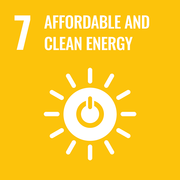
Cuprates: strange and promising metals for future technology
Superconductors are materials that represent one of the challenges facing scientific research. They have several possible applications due to their ability to carry electric current without heating up or dissipating energy; this characteristic can be exploited, for example, to reduce waste in the transport of electricity from power stations to homes and for advanced diagnostics in nuclear magnetic resonance imaging.
However, for a material to exhibit this property and become truly superconductive, it is necessary to drop to very low temperatures. At present, the use of superconductors on a large scale is uneconomical due to the high running costs, mainly with regard to cooling. Temperature is the key word, and globally, the solution lies in new materials that act as superconductors even at higher temperatures.
In this context, increasing attention is being paid to cuprates, compounds based on copper and oxygen, which, if suitably "doped" (i.e. with the addition of small quantities of impurities), become superconductors at high temperatures, opening up the prospect of promising future applications.
Cuprates, in particular, are characterised by a complex phase diagram in the temperature-degradation plane, in which several phases appear to compete with each other. Some of these competitive phases are elusive, and it is essential to observe and characterise them. This is the case of the charge density wave phase (the phase in which electrons, below a characteristic temperature of the material in question, are arranged to form an ordered structure in space), which was predicted by the Rome theoretical group as early as 1995 and has only recently been observed in all the materials of the cuprate family, thanks to the development of resonant inelastic X-ray scattering techniques.
Another important feature of cuprates are the anomalies in the metal phase properties: in particular, in the so-called 'strange metal' phase, the electrical resistivity increases linearly with temperature over a surprisingly wide range, which can extend from the highest observed temperatures up to the transition temperature to the superconducting phase, and even to lower temperatures if a magnetic field suppresses the superconductivity. Such behaviour is never observed in ordinary metals. In cuprates, the anomalous behaviour disappears in the charge density wave phase. In yttrium barium cuprate, a ceramic material which under normal conditions (i.e., when it is not 'doped') is an insulator, the researchers observed a profound connection between the appearance of the charge density wave and the deviation from this anomalous behaviour of the metallic phase at low temperature.
"By cross-referencing resistivity and resonant inelastic X-ray scattering measurements on thin films of this superconductor, commonly called YBCO," says Sergio Caprara of the Physics Department at Sapienza University of Rome, "we have shown that, as the film thickness decreases, in the region of the phase diagram where charge density waves are present, their progressive suppression is associated with a recovery of the linear dependence of resistivity on temperature, which is characteristic of these strange metals."
The result suggests, among other things, the possibility of manipulating the fundamental state of quantum materials using elastic stress as a control parameter, which in the experiment is introduced by the growth of thin films on a substrate.
This study, therefore, opens up further knowledge of cuprates, an increasingly promising material for future technological applications.
References:
Restored strange metal phase through suppression of charge density waves in underdoped YBa2Cu3O7-δ - Eric Wahlberg, Riccardo Arpaia, Götz Seibold, Matteo Rossi, Roberto Fumagalli, Edoardo Trabaldo, Nicholas B. Brookes, Lucio Braicovich, Sergio Caprara, Ulf Gran, Giacomo Ghiringhelli, Thilo Bauch, and Floriana Lombardi - Science, 2021. DOI: https://doi.org/10.1126/science.abc8372
Further Information
Sergio Caprara
Department of Physics
sergio.caprara@uniroma1.it
